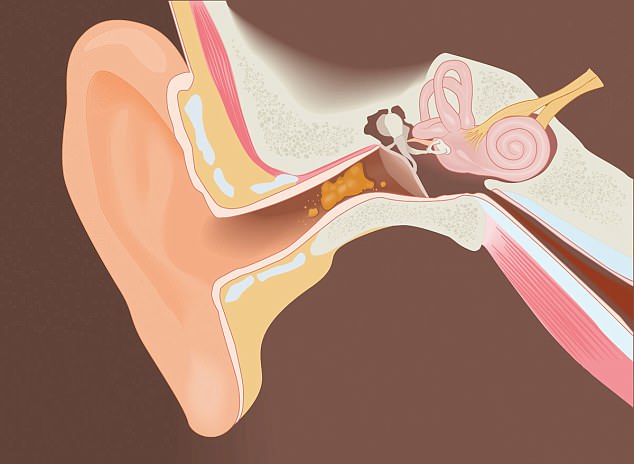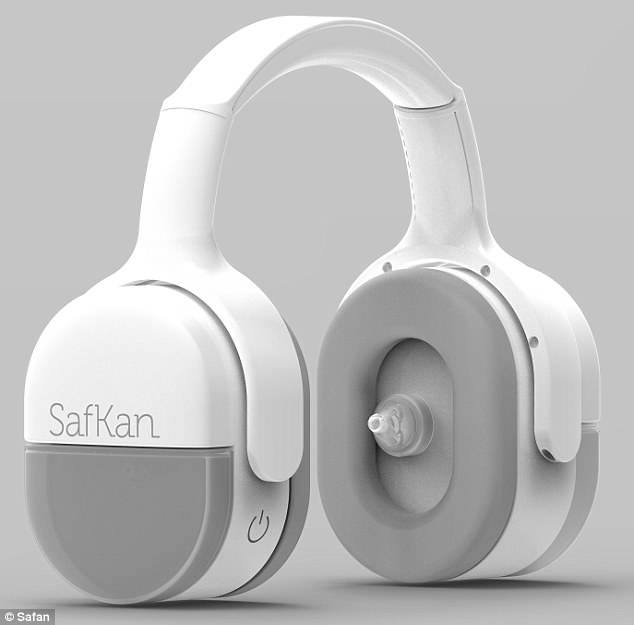A company has created headphones that can clear wax out of a person’s ears in 35 seconds, replacing harmful cotton swabs and costly visits to the doctor.
Seattle-based start-up SafKan developed a device that can clean both ears simultaneously in under a minute by injecting a mixture of hydrogen peroxide into the ear to loosen up wax before suctioning it out.
Millions of Americans experience excess or impacted ear wax that can cause pain, hearing loss, balance problems and other health problems.
Trying to remove that ear wax with Q-tips can cause even more damage to the ear’s delicate skin and potentially lead to a ruptured ear drum.
SafKan’s CEO claims that not only does this new technology make ear-cleaning more pleasant for users, it could also save significant time and money for physicians.
Ear wax is a sticky yellow substance that is produced in the ear canal in order to block dust, dirt, bacteria and other foreign objects from entering the body.
One in 10 children, one in 20 adults and one in three geriatric patients have excess or impacted ear wax, according to the American Academy of Otolaryngology.
Physicians in the US perform more than 12 million earwax removal procedures every year by squirting water into the ear canal with a blunt syringe.
The procedure has been around since 1821 and isn’t very precise, efficient or convenient.
After years of visiting his doctor to have impacted ear wax removed, Aadil Diwan came up with the idea for OtoSet and brought his brother Sihal on to run the business.
‘Excess/impacted earwax is a very common problem affecting hundreds of millions of people around the world, and still ear care has seen very little innovation in almost two hundred years,’ SafKan CEO Sihal Diwan told Daily Mail Online.
‘Physicians and providers are actually losing money every single time they do one of these procedures, right now. And it’s simply because of labor costs.
‘Our OtoSet will help physicians treat even more patients, and at the same time reduce labor costs and unnecessary referrals to specialists.
‘This saves health systems time and money on a very common procedure.’
In a press release Dr Gary Kato, a family care physician in Washington, said: ‘The SafKan team has developed a brilliant concept and design for managing a condition we commonly see in the office setting.
‘As an educator of Primary Care Physicians, I can envision physicians of the future using SafKan’s device as an essential tool in patient care.’

SafKan recently raised $1 million to help launch the headset at US hospitals, beginning four on the West Coast: University of Washington Medicine, Stanford Medicine, Cedars-Sinai, and Providence Saint John’s Health Center.
They will be sold with disposable tips and outflow containers. Pricing has yet to be determined but Diwan claims it will significantly cut costs for physicians and specialists.
A version to be sold directly to consumers is also being developed, Diwan said.
The hope is that offering a consumer version will decrease use of cotton swabs, which have been found to damage or irritate the very delicate skin of the ear canal, introduce sickness-causing bacteria or even puncture a person’s ear drum.
Despite protective qualities, people have long seen ear wax as an unsightly nuisance.
Many people use cotton swabs to clean out the wax, ignoring warnings on the packaging that say: ‘Do not insert swab into ear canal.’
A 2014 study by the University of Michigan found that thousands of adults find themselves in the ER each year because of cotton swab incidents.
Dr Peter Svider, an otolaryngologist and lead researcher on the study said that cotton swabs are not designed in a way that makes them a good tool for removing wax.












